Matcha is to Japan as champagne is to France.
Anything outside of Japan simply must be called, "powdered green tea." The purity of umami is exceptionally difficult to emulate and capture outside of the country, given the labor-intensive process making matcha is. A large part of this truth is due to terrior and cultivation! Here we’ll cover matcha and tencha on a profound level — from seedling to milling. Every step of tea processing is intentional in Japanese green tea culture. That’s why we think it’s essential to learn more about tencha and how to appreciate this less-known yet equally delightful green tea.
Most of us are familiar with the elegant, vivid green powder that many adore, but what is matcha made of? With matcha’s rapid growth in popularity, the best way to enrich your experience is to understand its origins. True matcha is made only from tencha (点茶) – a style of tea leaf that is only achieved through a very specific agricultural process (shading!). Though often less mentioned, tencha is an integral step to producing matcha –– it's actually the tea leaf milled to create matcha!
The tradition of growing matcha is a noble art. There are many factors deciding the quality of the end result of a masterpiece matcha, but the defining element is the cultivation of Tencha [碾茶].
 A Mizuba Tea producer holds just-finished tencha in his hands
A Mizuba Tea producer holds just-finished tencha in his hands
The Difference Between Matcha and Tencha
The main difference between matcha and tencha is form. Tencha’s sole purpose is to be milled into matcha. In fact, it’s pretty uncommon to drink it as a loose leaf tea! However, if you get the opportunity, tencha can be a treasure to brew. Drinking tencha is much like brewing and drinking other Japanese green teas, such as gyokuro or sencha — you steep the leaves in a kyusu and sip the jade liquor.
The entire milled tencha leaf is consumed as matcha, producing a higher concentration of nutrients and amino acids. There’s also an exciting difference in flavor between matcha and tencha — although you should be able to taste a distinct thread of flavor from leaf to milled form. Tencha may be light, buoyant, and sweet, while in matcha form, it is robust, full-bodied, and filled with deep umami.
What is Tencha?
Tencha, which translates to “tea for grinding” or “mortar tea”, is the whole-leaf that matcha is made of – right before it’s processed and ground. In Japan, tencha leaves are the only ones suitable for making matcha. Yet, many lower-quality “matcha” are made with sencha, or sun-grown tea leaves, creating a more intense flavor with higher bitterness and astringency. Tencha is typically talked about in similar terms as gyokuro because of its cultivation style and caffeine content — but do be aware they are very different styles of tea.
Tencha Cultivation and Production
Tencha is cultivated similarly to gyokuro but processed quite differently. Tencha is harvested in the spring between late April and mid-May. Twenty to forty days before harvesting, tencha is grown in the shade, producing high amounts of theanine, chlorophyll, and a smooth, mellow taste.
Once it’s harvesting time, the youngest, most tender leaves are picked. Tencha can be shade-grown for up to 50 days in some specialized, high-quality cases. Gyokuro, on the other hand, is generally only shaded for an average of 21 days.
The raw leaves, or aracha, arrive at specialized factories, where they are immediately steamed to stop the enzymatic breakdown and preserve color and amino acid properties. The leaves are dried in special brick ovens called Tencha Ro (technically, only true "tencha" is processed in these ovens) and sifted several times to remove stalks and other impurities.
How did shade-growing begin?
The shade-growing method was invented about 400 years ago when Uji region producers realized that fields that were shaded from the sun by their natural environment (trees etc.) produced mellower flavors than the fields exposed to direct sunlight. By artificially shading their fields, the producers were able to imitate nature and give their teas a mellow, umami rich flavor without having to relocate the tea bushes.
These days when the spring season arrives, (around mid-April, or about 40 days prior to harvest), screens or tana tarps are rolled out over the tea plants who have been storing nutrients all winter. The purpose of the tana tarps is to limit the sunlight that reaches the plants about 60-75%.
The most traditional form of shade-growing, honzu, is now rarely utilized due to the intense labor it requires. Honzu requires a covering made from multiple layers of straw or handmade reed screens called yoshizu. Mizuba's Tsuji-san Uji Hikari matcha is made utilizing this special method.
There are two reasons for limiting sunlight:
1) The super anti-oxidant catechins (epigallocatechin gallate, or known as EGCG) concentrate when the tea is grown in the sun. Catechins have a bitter flavor.
2) So to balance matcha and achieve umami, limiting photosynthesis (the process that would normally convert the amino acid L-theanine into catechins) instead increases the amino acid, which has a sweet flavor profile that you can taste!
Shade-growing tea allows for the plant to concentrate its many nutrients in the leaf, while also achieving a lovely and balanced flavor profile between the bitter catechins and sweet L-theanine.
About 10 days after the tana tarp is spread, some farmers choose to limit the sun even further, to about 90%. The tea plants strain for sunlight, thereby stretching and growing wider and thinner, and as a result, more tender and palatable.
Traditionally, dense heaps of bamboo reeds were used to create a screen over the plants. Today, that is exceptionally rare to find. Though it can cost up to a million dollars to install shade-growing tarps, today you'll most commonly see Tana - curtains that are suspended by metal poles over the fields.
Whether harvested by hand or machine, the tender tencha tea leaves must be processed very quickly - within 24 hours! The tencha tea leaves are steamed, de-stemmed, de-veined, and dried into a finished tea leaf that can be put through the stone mills. We have now reached tencha's final state - its transformation into matcha, the milled tea we all love!
For us at Mizuba, matcha must be sourced from properly-treated tencha tea leaves in order for us to consider adding it to our coveted matcha collection.
What Does Tencha Taste Like?
Since tencha tea is essentially matcha before it’s ground, you may wonder whether they have the same flavor profile. Interestingly enough, tencha has its own elegant, unique flavor. When you brew tencha, the liquor from leaves is only extracted, just like brewing a gyokuro or sencha. Best results require a high-grade tencha to brew flavorfully.
Taking a sip of tencha releases a rounded nutty flavor with sweet, vegetal undertones (you might think of delicate flavors like courgette and peach). The pale-green liquor of high-quality tencha boasts a delicate, mellow sweetness, quite different from matcha. Tencha produces subtle, pleasant notes and aromas that excite the senses and linger on your tastebuds. Ready to try it? Shop our exquisite loose leaf tencha.
Here is our brew guide for enjoying this special tea that is rarely drunk in loose-leaf form!
Tencha Brew Guide:
Amount: 7-8g Tencha
Water: 200ml water at 140º-175ºF
Time: 1.5 - 2 minute steep
Make Iced Tea: our tencha is great for both slow ice-steeping and cold brewing.
Learn 3 different methodologies to make iced tea here.
So now that we've discussed tencha...
So, Is Matcha, Tencha?
Matcha is milled tencha, and matcha fittingly translates to “ground tea” or “rubbed tea.” Matcha has been consumed in Japan for centuries, first for meditation purposes and later as a symbol of luxury. Most know it as its starring role in Japan’s iconic tea ceremony (known as chado, sado, or cha-no-yu). Today, the love for matcha continues to grow across the globe.
Matcha isn't just cherished for its distinct, delicious flavor, but also for its incredible health benefits. The tea’s ability to produce balanced energy throughout the day without anxiety or jitters makes it an attractive daily choice. The high levels of the antioxidant L-theanine make matcha a go-to for people who need a sustained energy boost and want to indulge in its complex flavors and other marvelous benefits.
Matcha Cultivation and Production
Tencha becomes matcha when it’s milled to a fine powder after harvesting, steam processing, and drying. Japanese green tea produced with quality and care often brings more pronounced flavors and higher levels of nutrients and amino acids. We personally source high-grade matcha from skilled Japanese green tea producers whom we know and count as friends – ensuring every serving is of exceptional quality and follows traditional Japanese harvesting and production standards.
What Does Matcha Taste Like?
Matcha is known for its earthy yet rich, sweet, vegetal, and cherished umami notes. The complex flavor profile brings a subtle nuttiness that slowly fades into a savory ending. Our Mizuba Daily Matcha boasts light aromatics of toasted vanilla with creamy, milky notes of freshly churned butter. The versatility of matcha makes for countless ways to enjoy it, whether on its own, with your favorite plant-based milk, or added to a sweet treat. Most people may think matcha as a monolith, simply tasting like, “green tea.” However, matcha is exactly like wine or chocolate, in that distinct matcha teas have different flavor profiles that you can taste. Different tea producers, regions, cultivars, and harvesting methods all contribute to a matcha’s flavor profile. Mizuba carries more than 6 different varieties at a time (not to mention our limited edition, seasonal offerings!). We even have a matcha tasting set where you can taste each tea’s distinct differences and flavor nuances.
Tips for Enjoying Tencha
While quite rare to find tencha sold as a loose leaf tea – due to most producers wanting to save tencha to mill into matcha – Mizuba has secured a special tencha available as a loose leaf tea. If you’ve never tried tencha, we have a few tips that might have you reaching for it as much as matcha.
Choosing high-quality tencha ensures the utmost care and mindfulness went into the production and harvesting process. If shade-grown properly, you’ll immediately taste a difference in the intensity of freshness and flavor. The more you experience quality tea, you’ll develop your palate and be able to differentiate between the distinct notes and flavors.
How to brew: We recommend brewing about 7g of our high-quality tencha in 180 ml of water for about 1.5 to 2 minutes. Tencha also pairs superbly with dark chocolate as a spaecial treat.
Expand Your Horizons With Tencha
Whether you’re a matcha lover, novice, or somewhere in between, exploring tencha is just one of the many incredible ways to discover different Japanese green tea styles. Tencha can open your eyes (and tastebuds) to new notes and flavors you never imagined enjoying while providing a greater understanding of the beauty of matcha.
At Mizuba, we love to help our customers learn about Japanese green tea's beautiful traditions and culture. Try out our tencha + matcha set, and let us know what you think!


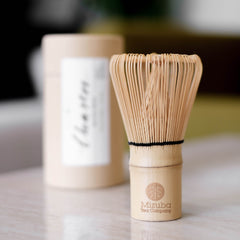
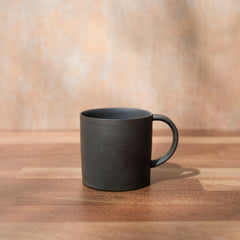
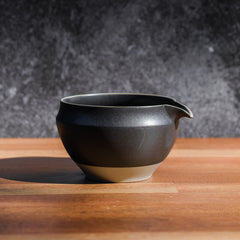
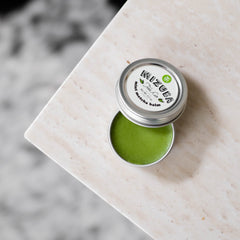
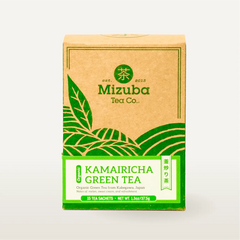

1 comment
Shade grown, stone-ground Tenacha leaves Matcha is what you want for drinking tea.
Leave a comment